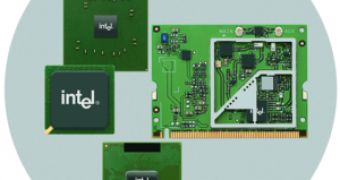While the desktop computer market is mainly centered around performance and price with energy efficiency usually a far off third, on the mobile computing market things are a little bit different as energy efficiency alongside with heat dissipation, pricing and performance is a key factor which can decide if a processor design is successful or not.
While Intel is still dominating the desktop computer market with its central processing units, on the server and mobile markets AMD poses a serious threat as the smaller company invested a lot in the research of new designs that maximize energy efficiency while reducing heat generation without any performance penalties. Now Intel wants to increase its presence on the mobile market by introducing quad core processors which are built using the 45 nanometer fabrication technology as those new CPUs are expected to increase the notebooks performance while maintaining a reasonable energy efficiency level.
The new Intel plans call for central processing units with low thermal design powers like the dual core CPUs with 25W and quad core units with 44W which will be launched in the first quarter of 2008. The expected dual core CPUs will have a much lower TDP rating than the current dual core offering from Intel which are in the range of 34W-35W. Apart from the incoming processors, Intel shipped for three consecutive years Pentium M products which were rated at a low 25W but which were not so performance centered as the actual Core 2 Duo solutions. Even if Intel and all major laptop and notebook manufacturers are directly interested in increasing battery life for all mobile computing system, the relatively high TDP rating of the current processors is preventing them from achieving a major breakthrough.
Apart from the already existing Montevina platform Intel plans to release Penryn mobile processors based on the dual core architecture with thermal rating between 25 and 35W and that move is expected to add both a performance boost to thin laptops and notebooks as well as an important increase in battery life without increasing their complexity or pricing. According to the news site xbitlabs the lineup will consist of three central processing units 3MB of L2 cache, 1066MHz processor system bus (PSB for short, which replaces the frontside bus) with 2.13GHz, 2.40GHz and 2.53GHz clock-speeds. On the other side of the energy efficiency fence there is the mobile version of the quad core Intel Core 2 Extreme chip. This projected CPU is aimed at users demanding the ultimate processing power from their laptops, even at the expense of battery life and it will feature 12MB of cache while using a 1066MHz PSB. Its thermal envelope is expected to be in the range of 44W-45W. The first quad core mobile microprocessors are expected to emerge in the second half of 2008.

 14 DAY TRIAL //
14 DAY TRIAL //